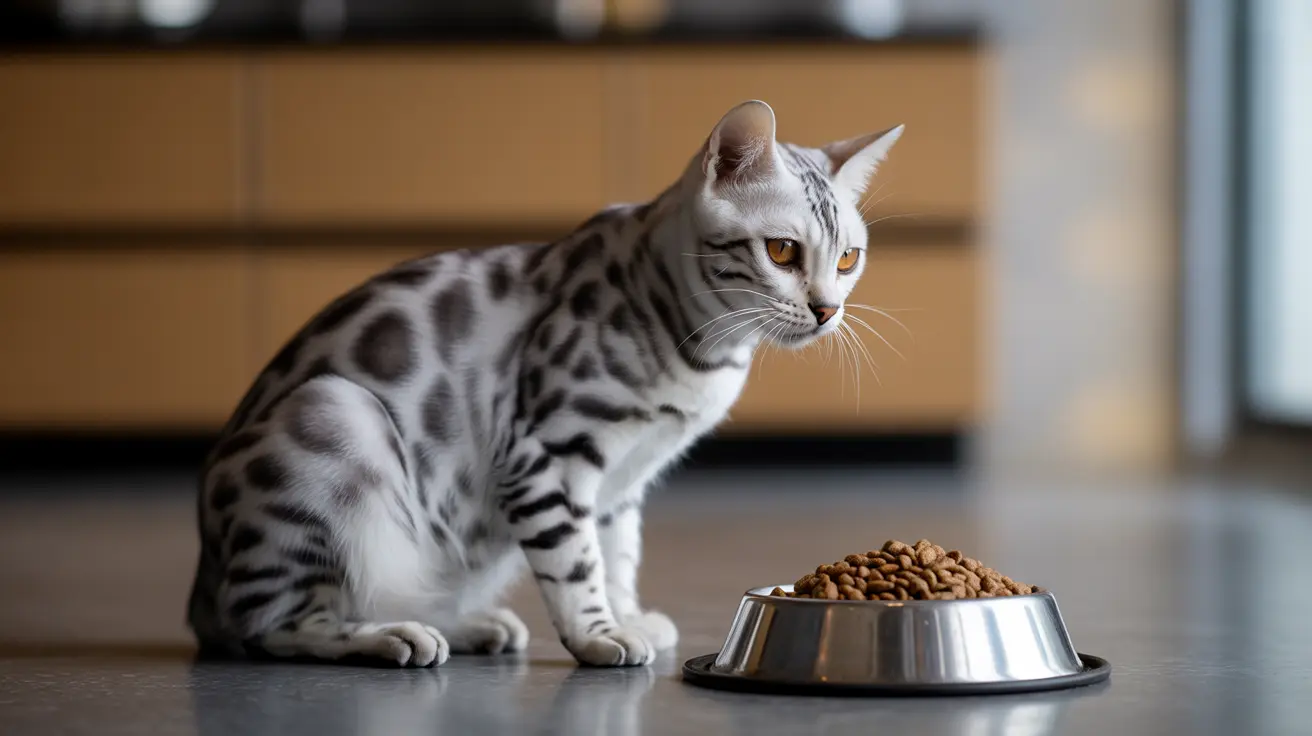7 Urgent Cat Health Signs Requiring Veterinary Care: When Your Feline Needs Immediate Attention
As a devoted cat owner, you've likely marveled at your feline companion's independent nature and seemingly effortless ability to care for themselves. However, this independence can be both a blessing and a challenge when it comes to their health. Cats are masterful at hiding illness and pain, making it crucial for pet parents to recognize the subtle yet urgent cat health signs requiring veterinary care that could indicate serious underlying conditions.
Understanding when your cat needs immediate professional attention can literally be the difference between life and death. Unlike dogs, who often display obvious signs of distress, cats have evolved to conceal weakness as a survival mechanism. This means that by the time symptoms become apparent, the condition may have already progressed significantly. Learning to identify these critical warning signs empowers you to act swiftly and potentially save your beloved companion's life.
In this comprehensive guide, we'll explore the most urgent health indicators that should prompt an immediate veterinary visit, help you understand what these symptoms might mean, and provide you with the knowledge needed to be your cat's best advocate during health emergencies.
Recognizing Appetite and Weight Changes That Demand Attention
One of the most significant urgent cat health signs requiring veterinary care involves changes in your cat's relationship with food. Because cats hide illness so effectively, alterations in appetite often serve as early warning signals of serious health problems that require immediate professional evaluation.
Complete loss of appetite, known as anorexia in veterinary terms, is particularly concerning in cats. Unlike dogs or humans who might skip meals occasionally, cats who refuse to eat for more than 12-24 hours risk developing hepatic lipidosis, a potentially fatal condition where the liver becomes overwhelmed trying to process stored fat for energy. This condition can develop rapidly and requires immediate veterinary intervention to prevent organ failure.
Weight loss, especially when sudden or unexplained, represents another critical warning sign. Cats losing weight despite maintaining their normal appetite may be suffering from conditions like diabetes, hyperthyroidism, or even internal parasites. Conversely, rapid weight gain can indicate fluid retention, organ dysfunction, or metabolic disorders that require prompt medical attention.
Monitoring Your Cat's Eating Patterns at Home
To effectively track your cat's nutritional status, establish a routine of observing their daily food consumption. Notice not just how much they eat, but how they approach their food bowl, their eating speed, and any changes in food preferences. Weighing your cat monthly using a digital scale can help detect gradual changes that might otherwise go unnoticed.
Behavioral Changes That Signal Internal Distress
Cats communicate distress through subtle behavioral modifications that often precede more obvious physical symptoms. Understanding these changes is essential for recognizing urgent cat health signs requiring veterinary care before conditions become life-threatening.
Sudden social withdrawal, where a typically affectionate cat begins hiding or avoiding interaction, frequently indicates pain or illness. Cats instinctively seek solitude when unwell, so a normally social pet who suddenly becomes reclusive should be evaluated immediately. Similarly, increased vocalization, particularly new or unusual sounds, can signal discomfort, confusion, or distress.
Changes in elimination habits represent particularly urgent warning signs. Cats who begin urinating outside their litter box, strain during urination, or show signs of pain while eliminating may be experiencing urinary blockages, infections, or other serious conditions. Male cats are especially susceptible to urinary blockages, which can become fatal within hours if not treated immediately.
Alterations in grooming behavior also warrant attention. Cats who stop grooming themselves or groom excessively in specific areas may be experiencing pain, skin conditions, or systemic illness. Older cats who lose their jumping ability or seem reluctant to move may be suffering from arthritis, joint problems, or other age-related conditions requiring veterinary management.
Digestive Emergencies: Vomiting and Diarrhea Red Flags
While occasional vomiting might be normal for some cats, particularly those who eat too quickly or groom excessively, persistent or severe digestive issues represent urgent cat health signs requiring veterinary care that should never be ignored.
Frequent vomiting, especially when accompanied by an inability to keep food or water down, suggests serious internal problems that could include poisoning, intestinal blockages, or organ dysfunction. Cats who vomit multiple times within a few hours or show signs of dehydration alongside vomiting require immediate professional evaluation. The repetitive nature of the vomiting, rather than just a single incident, often indicates the severity of the underlying condition.
Persistent diarrhea presents its own set of urgent concerns, particularly when it continues for more than 12 hours or contains blood. Diarrhea can rapidly lead to dehydration in cats, and may indicate parasitic infections, dietary indiscretions, inflammatory bowel disease, or more serious systemic conditions. The combination of vomiting and diarrhea creates a particularly dangerous situation that demands immediate veterinary intervention.
Recognizing Dehydration Signs
When digestive issues occur, monitor your cat for signs of dehydration, including tacky or dry gums, skin that doesn't snap back quickly when pinched, sunken eyes, or lethargy. These symptoms, combined with ongoing digestive distress, constitute a veterinary emergency.
Respiratory Distress: When Breathing Becomes a Struggle
Respiratory symptoms in cats often indicate serious underlying conditions that require immediate attention. Unlike humans, who might experience minor respiratory irritation from environmental factors, cats showing persistent respiratory signs typically have more significant health issues that need professional evaluation.
Persistent sneezing, especially when accompanied by nasal discharge, can signal upper respiratory infections, allergies, or even nasal tumors. While a sneeze here and there might be normal, continuous sneezing that lasts more than a day warrants veterinary examination. The color and consistency of any nasal discharge provide important clues about the underlying cause and severity of the condition.
Coughing in cats is always concerning because cats rarely cough due to minor irritation. Persistent coughing may indicate feline asthma, heart disease, respiratory infections, or other serious conditions. Open-mouth breathing or panting, particularly when not associated with stress or heat, represents a true emergency requiring immediate veterinary care, as cats should typically breathe through their noses.
Any signs of labored breathing, including visible chest movement, extended neck positioning, or breathing with an open mouth, constitute urgent cat health signs requiring veterinary care that demand immediate attention. These symptoms often indicate conditions like pneumonia, heart failure, or fluid accumulation around the lungs.
Neurological Emergencies: Paralysis and Mobility Issues
Sudden loss of mobility or coordination represents one of the most urgent cat health signs requiring veterinary care, particularly when it affects the hind legs. These symptoms often indicate serious conditions that can progress rapidly without immediate intervention.
Sudden paralysis, especially in the rear limbs, frequently results from arterial thromboembolism, commonly known as a "saddle thrombus." This condition occurs when a blood clot blocks the main artery supplying the hind legs, cutting off circulation and causing sudden paralysis. This represents a true veterinary emergency that requires immediate treatment to potentially restore circulation and save the affected limbs.
Other neurological signs that demand immediate attention include seizures, loss of coordination, head tilting, circling behavior, or sudden blindness. These symptoms can indicate conditions ranging from poisoning to brain tumors, and early intervention often improves outcomes significantly.
Age-Related Mobility Changes
While sudden paralysis always requires emergency care, gradual mobility changes in older cats may indicate arthritis or other age-related conditions. However, even these gradual changes benefit from veterinary evaluation to ensure appropriate pain management and treatment.
Urinary System Emergencies: Critical Signs of Blockage
Urinary system problems, particularly in male cats, represent some of the most urgent cat health signs requiring veterinary care due to their potential to become fatal within hours. Understanding these signs can literally save your cat's life.
Difficulty urinating, straining in the litter box with little or no urine production, or frequent trips to the litter box with unsuccessful attempts all suggest potential urinary blockage. This condition, more common in male cats due to their narrower urethra, prevents waste elimination and can lead to kidney failure and death within 24-48 hours if not treated immediately.
Blood in the urine, while alarming, may indicate various conditions from infections to tumors. However, when combined with straining or difficulty urinating, it becomes a true emergency. Any cat showing these combined symptoms requires immediate veterinary attention, regardless of the time of day.
Changes in urination frequency, whether increased or decreased, also warrant prompt evaluation. Cats who suddenly begin urinating more frequently may have diabetes, kidney disease, or hyperthyroidism, while those urinating less frequently may be developing blockages or other serious conditions.
Emergency Preparedness: When Minutes Matter
Understanding urgent cat health signs requiring veterinary care also means knowing how to respond effectively when these emergencies arise. Preparation can significantly improve outcomes and reduce stress for both you and your cat during critical situations.
Keep your veterinarian's contact information, including after-hours emergency numbers, easily accessible in multiple locations. Many areas have 24-hour emergency veterinary clinics, and knowing their location and contact information before you need them can save precious time during a crisis.
When preparing for an emergency veterinary visit, gather important information including your cat's medical history, current medications, recent behavior changes, and the timeline of symptoms. This information helps veterinarians make faster, more accurate diagnoses and develop appropriate treatment plans.
Creating an Emergency Kit
Maintain a basic emergency kit including a secure carrier, recent photographs of your cat, copies of medical records, and emergency contact numbers. Having these items ready can streamline the emergency process and ensure you don't forget important details during stressful situations.
Preventative Measures: Reducing Emergency Risks
While recognizing urgent cat health signs requiring veterinary care is crucial, implementing preventative measures can help reduce the likelihood of emergencies occurring in the first place. Regular veterinary care plays a central role in early detection and prevention of serious health issues.
Establishing a routine of annual wellness exams for adult cats, with more frequent visits for kittens and senior cats aged 10 years or older, allows veterinarians to detect subtle changes before they become emergencies. These routine visits typically include physical examinations, vaccination updates, dental assessments, and parasite prevention measures.
For senior cats, particularly those over 15 years old, veterinary visits every six months help monitor age-related health concerns more closely. Routine laboratory tests, including blood and urine analyses, can detect chronic diseases like diabetes, kidney problems, or hyperthyroidism in their early stages when treatment is most effective.
Environmental management also plays a role in emergency prevention. Ensuring your cat maintains a healthy weight through proper nutrition, providing mental stimulation through environmental enrichment, and maintaining parasite control measures all contribute to overall health and can prevent many emergency situations.
Frequently Asked Questions
How quickly should I seek veterinary care if my cat shows concerning symptoms?
Any concerning symptoms lasting more than 12 hours warrant veterinary attention. However, symptoms like inability to urinate, difficulty breathing, collapse, seizures, or suspected poisoning require immediate emergency care regardless of duration.
Can I monitor my cat's health effectively at home?
Yes, regular home monitoring is essential. Observe your cat's eating habits, elimination patterns, activity level, grooming behavior, and social interactions daily. Monthly weigh-ins and noting any changes in these areas help detect health issues early.
Are there differences in emergency signs between young and senior cats?
While the basic emergency signs remain similar, senior cats may show more subtle symptoms and are more prone to certain conditions like kidney disease and arthritis. Senior cats also require more frequent veterinary monitoring, typically every six months.
What should I do if my cat shows emergency signs after regular veterinary hours?
Contact your veterinarian's after-hours emergency number or visit a 24-hour emergency veterinary clinic immediately. Don't wait until regular business hours for true emergencies like breathing difficulties, paralysis, or inability to urinate.
How can regular veterinary visits prevent emergencies?
Regular checkups allow veterinarians to establish baseline health parameters, detect subtle changes early, provide preventative care like vaccinations and parasite control, and identify developing conditions before they become emergencies.
What information should I provide to the veterinarian during an emergency?
Provide your cat's medical history, current medications, timeline of symptoms, recent behavior changes, and any potential exposure to toxins or trauma. Having this information readily available helps veterinarians make faster, more accurate diagnoses.
How do I differentiate between urgent symptoms and minor issues?
Urgent symptoms typically involve vital functions like breathing, urination, neurological function, or severe digestive distress. When in doubt, contact your veterinarian for guidance, as cats hide illness well and seemingly minor symptoms may indicate serious conditions.
Conclusion
Recognizing urgent cat health signs requiring veterinary care is one of the most important skills you can develop as a responsible cat owner. Because cats are masters at hiding illness and pain, staying vigilant for subtle changes in behavior, appetite, elimination, breathing, and mobility can mean the difference between a treatable condition and a life-threatening emergency. Remember that symptoms like difficulty urinating, persistent vomiting, respiratory distress, sudden paralysis, or significant behavioral changes should never be ignored or delayed.
The key to protecting your feline companion lies in combining careful daily observation with regular preventative veterinary care. By establishing baseline knowledge of your cat's normal habits and maintaining routine wellness examinations, you create the foundation for early detection and successful treatment of health issues. When emergencies do arise, quick action and preparation can significantly improve outcomes, ensuring your beloved cat receives the immediate care they need to return to health and happiness.






